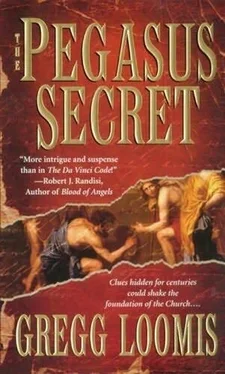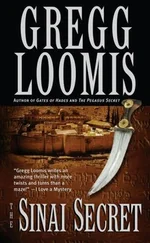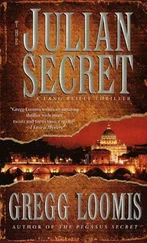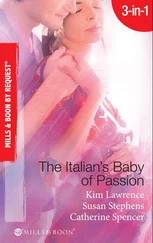Tartus appeared ready to speak again but did not. I was aware there was a secret that was being kept from me. There I should have allowed the matter to stand. Would that I had not continued so or that I had sought God's help before relying upon my own.
At the first opportunity, I repaired again to the library to ascertain who these Gnostics and Cathars might be.
I found both had their origins in the Holy Council of Nicea, 6at which the early Church adopted the four books as gospel, rejecting others. One of those rejected was that of Thomas, who wrote that Jesus instructed his followers to adhere to the leadership of James upon His death. 7
This Thomas might have been he who was the doubter, insisting to touch Our Lord's wounds, for it is from him these Gnostics and Cathars drew their loathsome heresy which, though such was not their purpose, denied the Holy Scriptures, many of which were writ in the blood of martyrs. 8
I was at first unable to discover the reason these apostasies found such sustenance here in the Languedoc as would require the maintenance of the Knights at such great expense.
Days later, I came upon the answer, a manuscript apparently taken from a Gnostic heretic shortly before his soul was sent to hell and his body to the stake. Rolled rather than bound, it consisted of a single scroll of vellum,9 badly spelled, poorly written and greatly faded. Had I not let my curiosity overcome my devotions, I would have realized this diabolic writing had been placed in my hands by the devil himself, just as he tempts many of the unwary with the promise of knowledge, for this document was obscene to all Christendom.
The Gnostic author of this abhorrent writing gave not his name but spoke of earlier writings which he purported merely to translate from the ancient Hebrew and Aramaic. They bespoke as follows:
After the Crucifixion of Our Lord, Joseph of Arimathea, 10who was Jesus's brother, and Mary Magdalene, who was Jesus's wife, 11fearing persecution also, fled to the far end of the Roman Empire which was then called Gaul. The area was peopled by a number of Jews including the exiled Herod. 12They brought with them only that which could be carried. Included among this impedimenta was a large vessel, the nature of which they kept secret and which they hid in the hills of this region near the River Sens and the mountain called Cardou, the same as the mountain Tartus had said the Brethren guarded.
It is here that this narrative denoted its heretical source which I dared not repeat lest my soul be forever damned for such blasphemous utterances. I did, however, seek out Guillaume de Poitiers and tell him some of the things of which I had read, though not the part that would damn me forever should I speak it. He was undistressed by it, saying the ravings of madmen had naught to do with us and our duty of loving and protecting The One True God.
But they did, as I was to learn to my sorrow.
Translator's Notes
1. The Latin vestimentum meaning clothing, is the word used. Since Pietro would have worn robes, the translator has chosen a literal translation.
2. This was, no doubt, not only the first system of cheques or drafts, but the first travelers' cheques.
3. By Papal decree, only Jews were permitted to charge interest on loans. This explains the rise of the Jewish European banking houses.
4. Although he uses the Latin word for barbarian, it is likely he refers to the Vikings whose raids extended even to the Mediterranean from the eighth until the tenth century.
5. From the Greek word for knowledge, gnosis. The Christian Gnostics believed that Christ was mortal, born of Mary and was touched by God. His spirit, not his corporeal body, ascended into heaven. The Cathars believed Christ was· an angel who never really existed in true human form. The potential damage either belief might have done the early or medieval Christian church, which had committed itself to the Pauline doctrine of the physical resurrection and ascension of Christ into heaven, is obvious.
6. 325 A.D. The major question addressed by this early conference of Christians was whether Jesus was created by God or was part of God. A seemingly academic distinction, the question had endless theological implications as will become apparent. The latter belief, Le., that Jesus was "begotten, not made," being of one substance with the Father prevailed.
7. The so-called Nag Hammadi gospels were unearthed in Upper Egypt in 1945, encased in terracotta jars like the Dead Sea Scrolls at Qumran. Translation of these remarkable documents, fifty-two in all, was not completed until 1977. They also refer to a Gospel of Thomas which contains such an admonition.
8. See 5 above.
9. Veelin, Frankish for lamb or lamb skin specially prepared for writing. It was not uncommon to also use calfskin or kidskin.
10. Aram, was the ancient Hebrew name for Syria but it is unlikely that a sibling of Christ could have come from there. We must assume Arimathea was a city in Palestine, the ancient name of which is lost.
11. This is not the first time the question of Christ's marital status has arisen. Jesus, as a Jew, would have followed the Jewish law's commandment to marry. In fact, the controversial Lobineau documents registered in the Bibliothèque Nationale in Paris make the argument that Jesus arrived in the Languedoc alive and en famille and was founder of the Merovingian dynasty of Frankish kings.
12. The Roman province of Aquitainia, subsequently Aquitaine in southern Gaul, including today's Languedoc, was a convenient place for Roman emperors to exile those fallen from grace. Ironically, Pontius Pilate was also banished there.
Oxford
Lang knew he was holding Wolffe's death warrant, the reason They had killed him. The thought made him glance apprehensively around the room before he began to read. First, he forgot his digestive problems, then where he was. The only interruption was that spoor of academia, annoying footnotes.
By the time Lang finished reading, he had some theories as to the painting's riddle. The question was whether he was going to live long enough to try them out.
London, South Bank
1630 hours
A dirty carpet of clouds was threatening rain by the time Lang wedged the Morris into the Strand's afternoon traffic and crossed Waterloo Bridge to South Bank.
Located along the inside of the bend of the Thames, South Bank was actually east rather than south of London. Until extensive urban renewal by the Luftwaffe in World War II, the area had been warehouses and factories. For the next fifty years, little was built there. Now it displayed highrise offices, music halls, galleries and housing for those who enjoyed contemporary surroundings. The skyline could have been that of any number of American cities.
Lang went straight down Waterloo Road to St. George's Circus, one of those traffic circles the British seem to prefer to traffic lights. After two circuits, he worked his way to the outside and exited onto Lambeth Road, where the Imperial War Museum's two massive· naval guns filled his windshield.
Off Lambeth, he crowded the Morris into a rare parking spot, killed the engine and watched the rearview mirror. Like most London streets, this one was one way, giving him a clear view of approaching vehicles. After five minutes, it was clear he hadn't been followed. He was fairly certain nobody but Jacob, Rachel and the professor knew he had gone to Oxford, but in light of what he had learned there, it would be an obvious place for Them to watch.
He cranked up the Morris and drove into a parking garage beneath an apartment building that would have been at home on Riverside Drive or East Seventy-first Street. He left the car in Jacob's space and followed the signs to the lift, as the English call elevators.
Читать дальше












